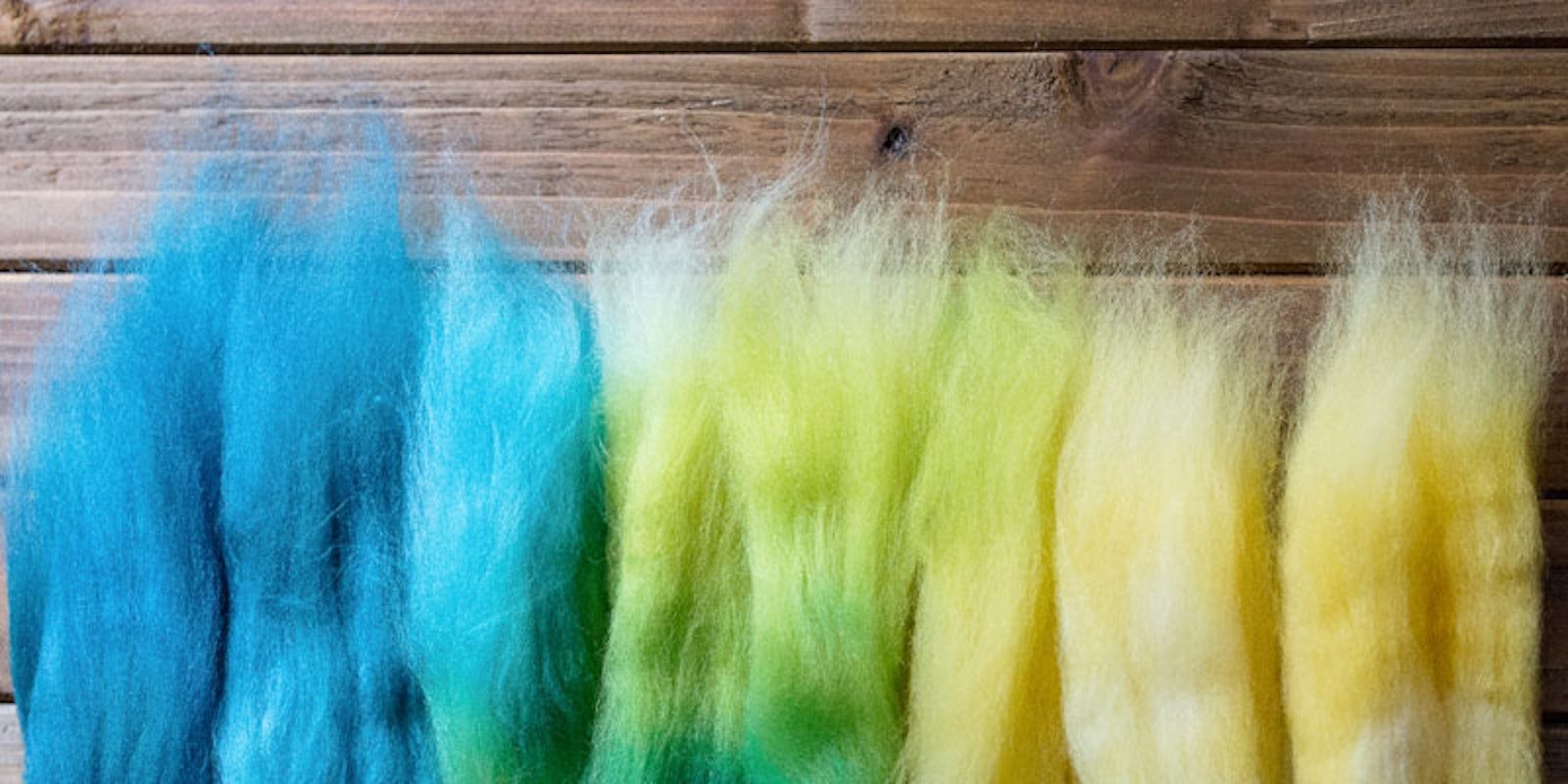Dyeing to Spin & Knit: Techniques and Tips to Make Custom Hand-Dyed Yarns was written by a dyer who spins. Have you ever considered how staple length affects the appearance of color in your handspun? Illustrating this point with hand-dyed locks, Felicia Lo shows how the longer-stapled fiber has two different colors that can’t be separated, while the shorter fiber has only one color. Spun up, the longer-stapled fiber creates a more muted color in comparison to the shorter-stapled fiber, whose color appears crisper.
Dyed locks of Wensleydale, superwash Merino, and a Polwarth/silk blend.
Grist is one way a spinner shapes the fiber’s future. Will the braid become a fine laceweight, yielding hundreds of yards per a pound (ypp), or will it be thick and chunky, producing only several dozen? The fabric knitted from these will result in very different expressions of the dyed fiber. Laceweight’s length can lead to pooling and fine dots of color, creating an optical mix. A thicker yarn will produce bolder pops of color. It is all in how we choose to spin it. How cool is that!
The founder and creative director of SweetGeorgia Yarns, Felicia is obsessed with color—and she wants to give you permission to dive in yourself. “To me, it’s about overcoming the fear of judgment, whether that’s from our own self-doubt or the perceived criticism of others,” she says. “I have often found that knitters and crafters can be sheepish or self-conscious about working with or wearing things made with strong colors, despite really enjoying the depth and vibrancy of those colors.” In other words, her new book, Dyeing to Spin & Knit, is designed to teach you how to dye yarn and fiber with the confidence and playfulness that have made her colorways so popular.
When we give in and buy that hand-dyed roving beckoning from the booth at our local fiber fair, the dyer relinquishes control of the colorway. We are now in relationship with them, and marrying our own vision of the finished yarn with theirs. Felicia guides us through our choices in Dyeing to Spin & Knit.
Happy spinning! Elizabeth


